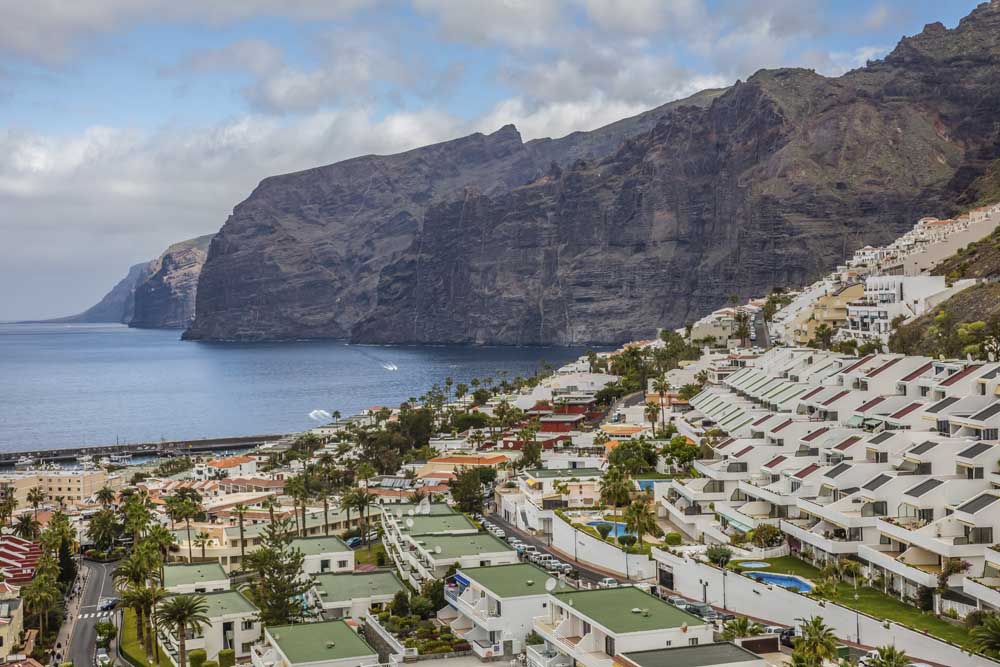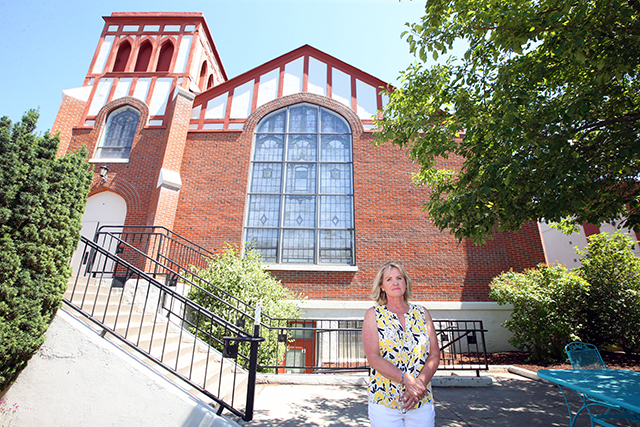The allure of the night sky in Spain’s Canary Islands
Published 12:00 am Sunday, May 8, 2016

- Black cliffs tower over the shore north of Los Gigantes on Tenerife. Tenerife’s Mount Teide is a Unesco World Heritage site and also a designated Starlight Reserve, an asset that increasingly draws astronomy-minded visitors up from Santa Cruz de Tenerife.
Way, way out in the Atlantic Ocean, at a point where one of Earth’s four cold water currents meets the searing African desert winds, nights are dark as prehistory. Once the sun sets on the volcanic archipelago known as the Canary Islands, a misty net of extraterrestrial white light blankets the sky from horizon to horizon. Until dawn, every ray of visible starlight in the entire Northern Hemisphere and much of the Southern Hemisphere gathers overhead. That sprawl of sky over a small island speck on the black ocean suggests, like few other experiences, the nanosecond that is human life.
Such black nights and clear skies have beckoned astronomers to install some of the world’s most powerful telescopes on volcanic peaks in this archipelago off the northwestern coast of Africa. As scientists use these state-of-the-art observatories to search out signs of the Big Bang, at sea level 8,000 feet below, tens of thousands of mostly British pensioners and brides-to-be on “hen parties” are getting drunk and sunburned.
Trending
Five million tourists annually visit this Spanish territory from colder climes to bask in Europe’s only subtropical weather. The port at Tenerife, the largest island, is the third-most-visited cruise ship destination in Europe.
Behemoth floating parties disgorge thousands of passengers daily in wintertime, the high season. Most of them are oblivious to the fact that they have just disembarked on an island with three official UNESCO-sanctioned Starlight Reserves — locations where efforts are being made to fend off light and air pollution to protect access to starlight. Only a small percentage of tourists make the two-hour nauseating and twisting ascent to the telescopes — giant, bulbous white towers, perched at the windy top of Mount Teide.
That might be about to change. Astrotourism is already a component of the Canaries’ booming tourism industry, drawing about 200,000 visitors annually. But with the 2014 designation of the islands as part of a larger EU SkyRoute itinerary for visitors, and the creation in 2011 of a music and astronomy festival, Canarian officials believe more star trekkers will soon be taking the winding drive up the mountain at dusk to sit on what might be called one of nature’s sky-decks.
Island officials and the Spanish government are trying to cement the islands’ reputation as a key destination for both amateur and professional astronomers. In 2007, scientists and policymakers from some 50 countries met on the smaller island of La Palma for the first International Conference in Defense of the Quality of the Night Sky, producing a declaration on “protecting the sky as a basic right for all humanity.”
Among other matters, they discussed outlawing light pollution in La Palma, home to the world’s largest optical telescope at the Roque de los Muchachos observatory. The island happens to be the second-best location for infrared and optical astronomy in the Northern Hemisphere, after Mauna Kea Observatory in Hawaii, according to astronomers.
The Canary Islands telescope sites are run by astronomers at the Institute of Astrophysics in Tenerife, a local research organization that operates the European Northern Observatory. The islands have also hosted telescopes from 28 nations over the last few decades.
Trending
La Palma, population 70,000, is home to a large colony of scientists and the remnants of a 1960s German commune, and it is also a tiny center for astrotourism. The economy revolves around astronomy, and besides the telescope and research center, there are 13 sky-viewing points on La Palma. Vacationers can even rent telescope-equipped holiday houses and sip a vintage called “stellar wine” from local grapes.
By day from some points near sea level on Tenerife, one can see the white columns of the telescopes perched miles high on the old volcano. Researchers use them to look back in time at starlight generated millenniums ago and to advance humanity’s developing perceptions about space and time.
Impulses both earthly and intellectually sublime coexist easily on the Canary Islands. The British lose their stiff upper lip in the Canaries faster than you can say Spanish sun, and a British television documentary called “OAPs Behaving Badly” recently reported that so many British retirees party in the bars that one of the spots is known as “God’s Waiting Room.”
Tenerife’s astrotourism lure was bumped up in the past few years with the Starmus Festival, headlined by the likes of the late U.S. astronaut Neil Armstrong and other stars of the space world. In the fall of 2014, in a vast conference hall in the Ritz Carlton’s Abama resort, a terra cotta red Moorish-styled compound, Garik Israelian, a Canarian astrophysicist, stood before 600 science aficionados from all over the world, with music from Pink Floyd’s “Dark Side of the Moon” blasting from speakers all around.
A few hundred yards away, the Atlantic crashed into jet-black rocks and split the blazing afternoon sunlight into spray diamonds, but down in the conference room, travelers from as far away as Canada and China couldn’t have cared less about sun and sea. Everyone had his or her iPhones aimed at the wheelchair mounted with a black Intel laptop that almost obscured the small, slumped figure of Cambridge physicist and best-selling author Stephen Hawking.
Hawking, along with Brian May of the band Queen, who earned a doctorate in physics from the Canary Islands astrophysical institute, evolutionary biologist Richard Dawkins and several astronauts, was among the headliners at the second Starmus Festival in 2014, the pet project of Israelian.
Israelian is a rocker-scientist who had his own punk band and studied astrophysics in Armenia before emigrating to Spain with his family in the 1970s. He moved to Tenerife and began researching supernovas at the observatories — with Pink Floyd, Peter Gabriel, Brian Eno and other ’70s rockers blasting on his earphones.
Canary Islands resemble the Caribbean but possess facilities and characteristics of Europe — hospitals, low crime, relatively high standard of living, Spanish culture and healthy, delicious food (great tapas, olive oil, indigenous white goat cheese and a local delicacy, “wrinkled potatoes” boiled in salted water until the water evaporates). But the chief difference between Tenerife and, say, Aruba or the Bahamas is the island’s role in international space endeavors.
Israelian conceived Starmus, the island’s science and rock festival, in 2011, and its name is short for “star music.” The concept of music from stars — unlike the medieval “music of the spheres” — actually has some basis in science, and Israelian has made a study of it.
“When the first sound waves were detected in stars, about 10 years ago, I realized this whole new branch of astronomy was starting,” he said. “We have tools to detect those sound waves. They are low frequency infra-sounds. The timbre is different, but I can take the sound … and I can move it to our domain, so we can hear it.”
Israelian, who is compiling a library of the star sounds, likes to think big (he’s working on projects to help Armenian and other orphans in Syria).
In the fall of 2014, at the second Starmus, he had 600 attendees, a repeat attendance by Hawking, and the participation of the local government and tourism agencies. Israelian plans a third, even larger Starmus festival from June 27 to July 2 this year devoted to discussion of the search for life in the universe.
“The only place and best place to do something like this is here,” he said. “In one hour, we can get a bus and get to a star party with the biggest telescope in the world, at night. There is no place on the planet where you can do that.”
Hawking is again expected, along with 10 Nobel laureates, a gaggle of U.S. and Russian astronauts, and Neil deGrasse Tyson, the U.S. astrophysicist.








